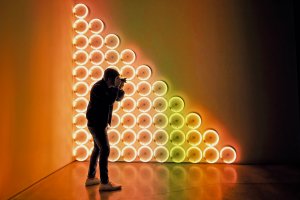10+1 beginner photographer’s mistakes to avoid from day one
Do you remember that moment when you went from being a simple amateur to taking the big leap and turning your passion for photography into a way of life? That decisive moment when you decided to take it seriously and start your journey as a professional photographer? If you’ve only recently made that decision, this article on the most common beginner photographer mistakes will be especially useful for you. We will go over the most common mistakes when starting out as a photographer so that you can avoid them from the very beginning and make steady progress.
And if you’ve been in the professional world for years, you’ll probably identify with more than one of these mistakes. After all, we’ve all stumbled at some point when starting out, and recognising these beginner photographer mistakes is part of learning.
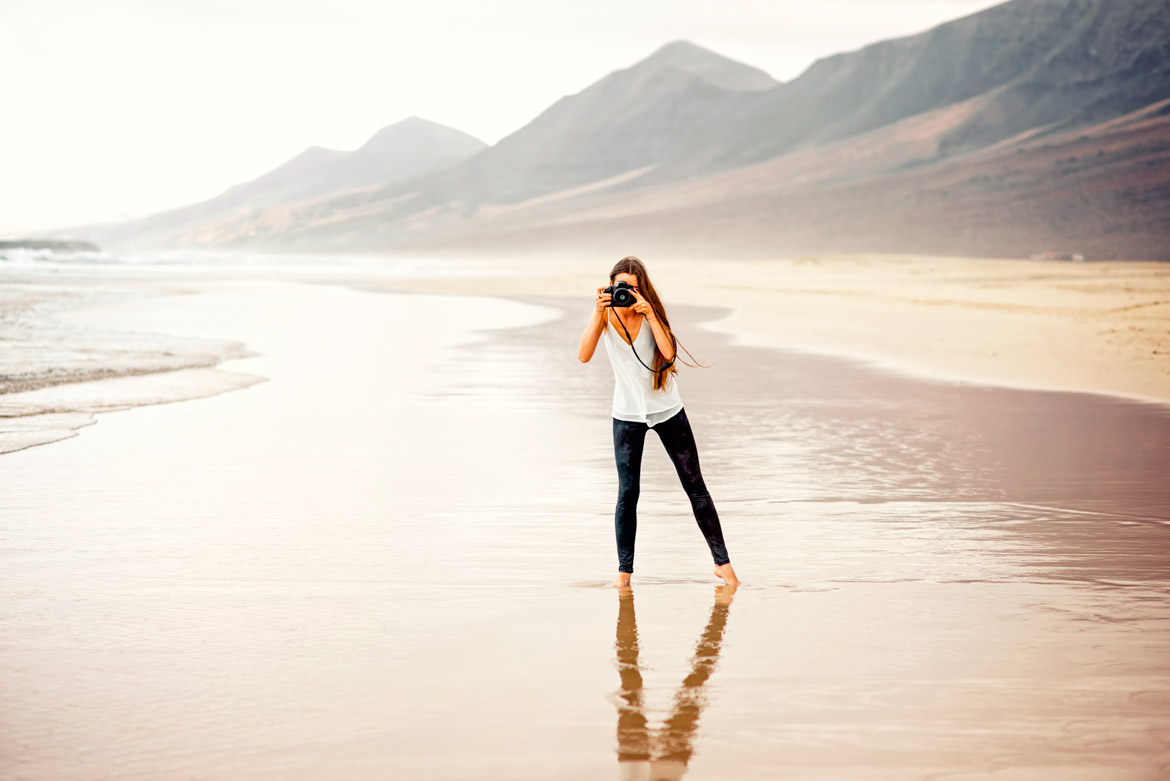
Discover the most common beginner photographer mistakes and learn how to avoid them with this handy guide.
Contenido
- Beginning photographer mistakes: what are the most common and how to avoid them?
- 1# Don’t stay in automatic mode: start mastering your camera
- 2# ISO is not the enemy – learn to use it to your advantage
- 3# Images with too many elements and poor visual distribution
- 4# It’s not the camera that creates great photos, it’s your skill and experience
- 5# Comparing yourself to professional photographers will only limit your growth
- 6# Training is the basis for growing as a professional photographer: don’t neglect it
- 7# Explore, experiment and master the post-production process
- 8# Planning each shoot well can be your greatest asset as a photographer
- 9# Explore different techniques, spend time practising and you will reach your goals
- 10# The profession of photography does not have to be a lonely path
- 11# Don’t wait any longer to take the first step towards your digital photography business
- Tips and recommendations from the best photographers in Arcadina
- Avoid the mistakes of a beginner photographer with these 10+1 key tips from Arcadina
- Arcadina goes with you
Beginning photographer mistakes: what are the most common and how to avoid them?

As in any other profession, the beginnings in photography are marked by constant learning, successes… and also mistakes. The famous “trial and error” is part of the process, and no one is free from making a few stumbles when starting out. Of course, the photography industry is no exception. To help you move forward with more confidence and save yourself from some of those common mistakes, we’ve put together this guide to the 10+1 most common beginner photographer mistakes. Knowing them will allow you to avoid them and focus on what really matters: improving your technique and developing your style.
And as an added value, at the end of the article you will find the advice of three renowned professionals in the world of photography, whose recommendations can make a big difference on your way to success.
1# Don’t stay in automatic mode: start mastering your camera
We begin this little guide to beginner photographer’s mistakes by talking about one of the most basic yet most important aspects of photography: how you use your camera. When you start out in the world of photography as a hobby, the automatic mode can seem like a real marvel. Without the need for technical knowledge, the camera automatically adjusts key settings such as aperture, shutter speed, ISO sensitivity and more, allowing you to take decent pictures with relative ease.
However, the problem arises when you decide to take the next step and stop being a mere amateur and turn your passion into your true vocation. At that point, blindly relying on the camera’s automatic settings is no longer enough. It is essential that you understand what each of these parameters does and learn how to handle them in order to select the most appropriate values according to the story or feeling you want to convey in your images.
To achieve this level of control and creative expression, something as basic and yet as important as reading your camera’s manual becomes indispensable. Although it is common for many beginner photographers to overlook this task, familiarising yourself with the functions and possibilities of your equipment is the first big step towards mastering it and moving away from reliance on automatic mode.
2# ISO is not the enemy – learn to use it to your advantage
ISO sensitivity, along with shutter speed and aperture, is one of the three fundamental parameters that determine the exposure of a photograph. Specifically, ISO controls the sensitivity of the sensor to light: the higher the ISO, the higher the sensitivity, allowing you to capture images in low light conditions. It is essential that you learn how to set your ISO correctly to get the results you are looking for, as good ISO management will allow you to expand the creative and technical possibilities of your photography.
However, it is common for many beginner photographers to be afraid of raising the ISO, because of the risk of generating “digital noise” or grain in the images. This fear is understandable, as too high an ISO can degrade the quality of the photo. But in certain situations, raising the ISO intelligently can be the key to much better results, such as when you need a fast shutter speed to freeze motion or when you are working in low light and don’t have a tripod.
The key is finding the right balance and knowing the limits of your equipment, as modern sensors are getting better and better at handling noise at high ISOs. So don’t be afraid to experiment with this parameter; understanding and mastering ISO will open many doors to improve your images.
3# Images with too many elements and poor visual distribution
An overloaded or unbalanced composition can detract from the impact of your photographs, making it difficult for the viewer to know where to look. When there are too many elements in the frame, the image loses clarity and the message is diluted, causing confusion rather than interest. Simplicity and balance are key to effective composition. Learning to select what to include and, above all, what to leave out of the frame, will help you to highlight the main subject and create a visually pleasing and harmonious image. Using negative space, respecting leading lines and applying techniques such as the rule of thirds are tools to help achieve this balance.
Remember that in photography, less is often more. A clean, well-balanced composition captures attention better and conveys your vision clearly and powerfully.
4# It’s not the camera that creates great photos, it’s your skill and experience
One of the most common mistakes beginner photographers make is to invest large sums of money in high-end photographic equipment from the start. While it’s true that good equipment can facilitate certain technical and creative aspects, this approach can backfire if you don’t yet have the experience to make the most of it.
No matter how advanced a camera is, if the photographer does not know how to use it properly or does not understand the basics of photography, the quality of the equipment will not make a difference. The best thing to do when starting out is to opt for a quality, but mid-range camera that offers good performance without being overly expensive. The important thing at this stage is to learn how to make the most of its functions, master the manual mode, understand light and improve composition. Once the photographer has developed a solid foundation and has identified the type of photography he or she wants to specialise in, it is the right time to consider a larger and more specific investment.
In addition, there is another point that is often overlooked: the portfolio. When you are just starting out and have not yet built up a reputation, your most powerful calling card will be your work. So instead of spending your entire budget on a state-of-the-art camera, it can be much more effective to invest in training, hands-on experience, good photo editing or even a professional website to showcase your portfolio. That will be the real springboard to start standing out in the industry.
5# Comparing yourself to professional photographers will only limit your growth
Throughout your career as a photographer it is very positive to have references. Looking at the work of other professionals who have gone far can inspire you, help you set goals and motivate you to keep learning. However, one of the most common mistakes a beginner photographer makes is to compare his or her own photographs, which are still in the development stage, with those of the great names in the sector.
It is important to understand that behind a professional image there can be many factors that are not visible to the naked eye: a high-level technical team, a production team, years of experience, access to special locations, professional retouching, among others. Comparing yourself to that kind of work when you are starting out is not only unfair to yourself, but can be unnecessarily demotivating.
Instead, ideally, set small, achievable goals that are tailored to your current level. Celebrate every improvement, no matter how small it may seem, and approach your progress as a constant learning process. With practice, training and perseverance, these small goals will take you much further than you imagine.
6# Training is the basis for growing as a professional photographer: don’t neglect it
Being self-taught is a great way to get started in photography: it allows you to experiment, discover your style and learn at your own pace. But if you really want to take the leap and turn your passion into a profession, sooner or later you will need more structured and in-depth training. Serious training will allow you to acquire the technical knowledge necessary to fully master your camera, understand how to make the most of light, improve your compositions and become familiar with other key elements such as the use of lenses, flashes, accessories and, of course, the whole post-production process.
Without this solid foundation, it is very difficult to progress to a professional level. Intuition and practice are important, but technique and knowledge will give you confidence, consistency and the ability to adapt to any photographic situation. Investing in good training is an investment in yourself and in the future of your career as a photographer.
And even if you’ve already established yourself as a professional photographer, you should never stop training. New tools, more advanced editing techniques, emerging visual styles and innovations such as the use of Artificial Intelligence in workflows are transforming the way images are produced and consumed. Keeping up to date will allow you to remain competitive, broaden your creative approach and better adapt to market demands.
>> AI applied to photography: Tools to turn artificial intelligence into an ally
7# Explore, experiment and master the post-production process

Being a professional photographer goes far beyond capturing good images with the camera. A fundamental part of the creative process happens after the shot, in front of the computer. Knowing how to treat and optimise your photographs in the post-production phase is what will make the difference between a good image and a truly stunning one.
That is why it is essential that you set aside time to learn how to use editing programs such as Lightroom, Photoshop or other specialised software. A thorough knowledge of their tools, functions and possibilities will allow you to have total control over the final result, correct mistakes, enhance your images and give them your personal stamp.
Here again, two key pillars come into play in your evolution as a photographer: training and constant practice. Mastering post-production requires patience, attention to detail and dedication. Failing to do so is one of the most common mistakes a beginner photographer makes, as many underestimate the importance of this stage. Learning how to edit properly will not only improve the quality of your work, but will give you more confidence as a professional and allow you to better adapt to the demands of your clients.
8# Planning each shoot well can be your greatest asset as a photographer
Especially when you are just starting out, planning becomes a key factor in gradually achieving the goals you have set for yourself. Although creativity and spontaneity are a fundamental part of photography, if you really want to become a professional and generate income from your work, it is essential that you plan your first sessions in detail. Here are some essential recommendations to get your projects off to a good start:
- Outdoor shoots: find out about the environment, choose the time of day with the best light and always have a plan B in case the weather doesn’t work out, such as rain or unexpected wind.
- Indoor shoots: make sure you have all the props, props and props you will need ready. It is also advisable to have extra items to deal with any unforeseen events that may arise during the shoot.
- Equipment preparation: check and prepare all your equipment in advance. Bring extra batteries and memory cards, especially if you will be working on location or on long days.
- Communication with the client: Before the shoot, have a clear and detailed conversation with your client to agree on the objectives, the desired style and any other relevant aspects. This will avoid misunderstandings and help you meet your client’s expectations.
These planning guidelines will not only increase your confidence when working, but will also help you to significantly reduce common mistakes on your first photo shoots. With good preparation, every shoot will be an opportunity to learn and grow as a professional.
9# Explore different techniques, spend time practising and you will reach your goals
Another common mistake a beginner photographer makes is to limit himself to shooting only what he likes, without exploring other disciplines. For example, if you are passionate about landscape photography, it’s great to focus on practising different techniques within that field. However, it is important that you also venture into experimenting with other very different styles, such as portraiture, wildlife photography or even street photography.
Why? Because each speciality gives you unique skills and knowledge that you can apply to improve in your favourite area. For example, working with moving subjects will help you perfect your shutter speed and focus management, while portraiture will teach you how to connect with people and control lighting more precisely.
Our advice is to try a variety of genres and techniques, especially at the beginning of your career. Don’t close yourself off to any one option until you have explored enough to discover what your own style is. This openness will enrich you as a photographer, make you more versatile and allow you to avoid one of the most common mistakes beginners make: stagnating before you find your true path.
10# The profession of photography does not have to be a lonely path
Although being a photographer may seem like a solitary activity, especially when you work alone behind the camera, the reality is that it doesn’t have to be. Especially in the early stages, when you are starting out and making your first stories, having the support and experience of more advanced colleagues can make a big difference to your professional growth.
That’s why it’s essential that you get involved in photography communities: participate in online groups and forums, attend workshops, conferences and events related to photography. These spaces not only provide you with opportunities to train and update yourself in techniques and trends, but they are also ideal places to network, make new friends and learn from the great leaders in the sector.
At Arcadina, we are committed to the development of photographers at all stages of their career. For this reason, we support numerous professionals and collaborate with various photographic associations that offer courses, workshops and talks on a wide range of subjects related to the art and technique of photography. If you want to keep up to date with these initiatives and discover valuable resources for your training, you can follow all our sponsorships and activities through our official Instagram account.
11# Don’t wait any longer to take the first step towards your digital photography business
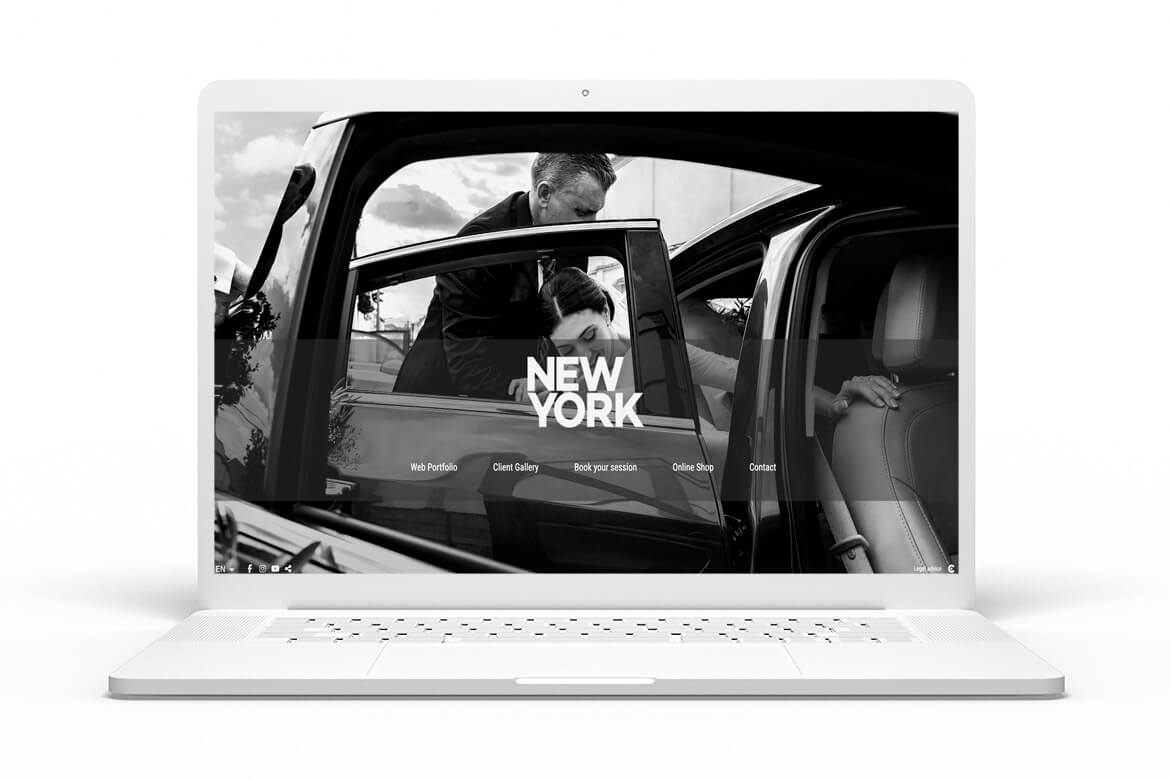
Create your digital photography business
To conclude this compilation on the mistakes of a beginner photographer, it is essential that you consider the option of creating your digital business first before investing in a physical photo studio. This is a much more cost-effective and practical strategy to validate whether your project can successfully get off the ground.
Creating a website dedicated to your photography, and updating it with valuable content on a constant basis, will help Google to improve your ranking organically. In addition, a digital business allows you to sell your first photographs directly in your public client galleries, and offer your clients a private professional space such as private galleries, where they can view, download, select and purchase images of your reports through private galleries.
If you incorporate a booking calendar, you can continue to expand your portfolio or attend to your first clients while others make their bookings automatically and directly from your website, facilitating the management of your work.
If you are not yet familiar with our exclusive solutions for photographers, we invite you to try them for 14 days for free. You will discover all the tools we have designed to help you boost your digital business and professionalise your career.
Tips and recommendations from the best photographers in Arcadina
Below, we would like to share with you a selection of valuable tips and recommendations that we have received from some photographers with great professional careers, who also fully trust Arcadina to manage and boost their businesses.
Before going into detail, we would like to take this opportunity to introduce you to our Arcadina Ambassadors and Top Photographers page. In this space you will be able to meet several outstanding photographers who have been using our solutions for some time and who, whenever they have the opportunity, promote and recommend our tools as a fundamental part of their professional growth.
We invite you to discover their stories, their work and how Arcadina has helped them to boost their careers. Undoubtedly, a source of inspiration for those who are taking their first steps or looking to consolidate their photographic project.
>> Arcadina’s Ambassadors and Top Photographers
Foto Arte Carlos Felipe: artistic wedding reportages
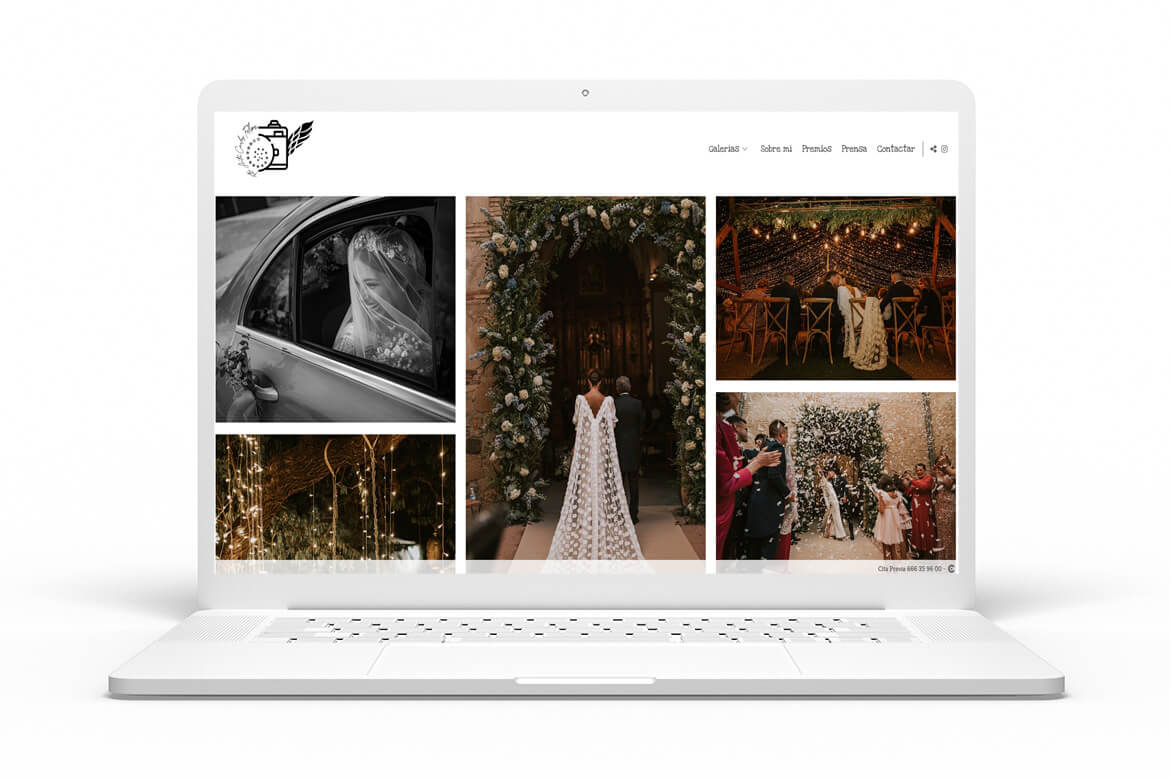
Carlos Felipe, as well as being one of our Arcadina ambassadors, is a prestigious wedding photographer in Almeria, known for a very personal style that has led him to win numerous awards and recognitions in Spain and abroad.
With a solid background and a very authentic look, Carlos tells us that, beyond listing the mistakes of a beginner photographer, he prefers to share a series of practical tips based on his own experience. His objective is clear: to help those who are starting out in this profession to do so with greater confidence, avoiding unnecessary stumbles and making the most of every opportunity.
Carlos Felipe Ortiz’s recommendations
- “Don’t get obsessed with changing equipment every few months.” Find a camera you feel comfortable with and get the most out of it.
- “Don’t think you know everything about your profession as a photographer.” Training is essential for you to move forward.
- “Don’t just train with photographers of your own style. If you want to grow, discover other styles to create your own.
- “Learn to be an entrepreneur. Spend time learning how to be an entrepreneur, manage and grow your business.
- “Keep your website, business and networks up to date.” Your customers will be looking for you online and it is important that you keep these channels up to date.
- “Evaluate if you need a study and if it is not essential, invest in your online business”. Invest part of the capital in improving your website, networks and advertisements.
- “Do a market study to set prices that don’t break the market. Don’t set prices too low or offer extra services for free. This will ultimately hurt the whole industry.
- “Avoid imitating your reference photographers”. It’s all very well having a photographer to look up to, but it’s important to find your own style and not copy their method.
- “Be original and stay away from trends. Don’t focus too much on the fads or trends of the moment so that when they become obsolete, your stamp of identity remains intact.
- “Don’t lose your creativity. Keep alive the bug and the desire to try new things that you have when you are just starting out.
- “Offer the client a selection of 300 of the best photos of their wedding rather than 5,000 ordinary images. Give value to your work and explain to your clients that this job can’t be done by just anyone.
Maru Serra: boudoir, children’s and communion photography
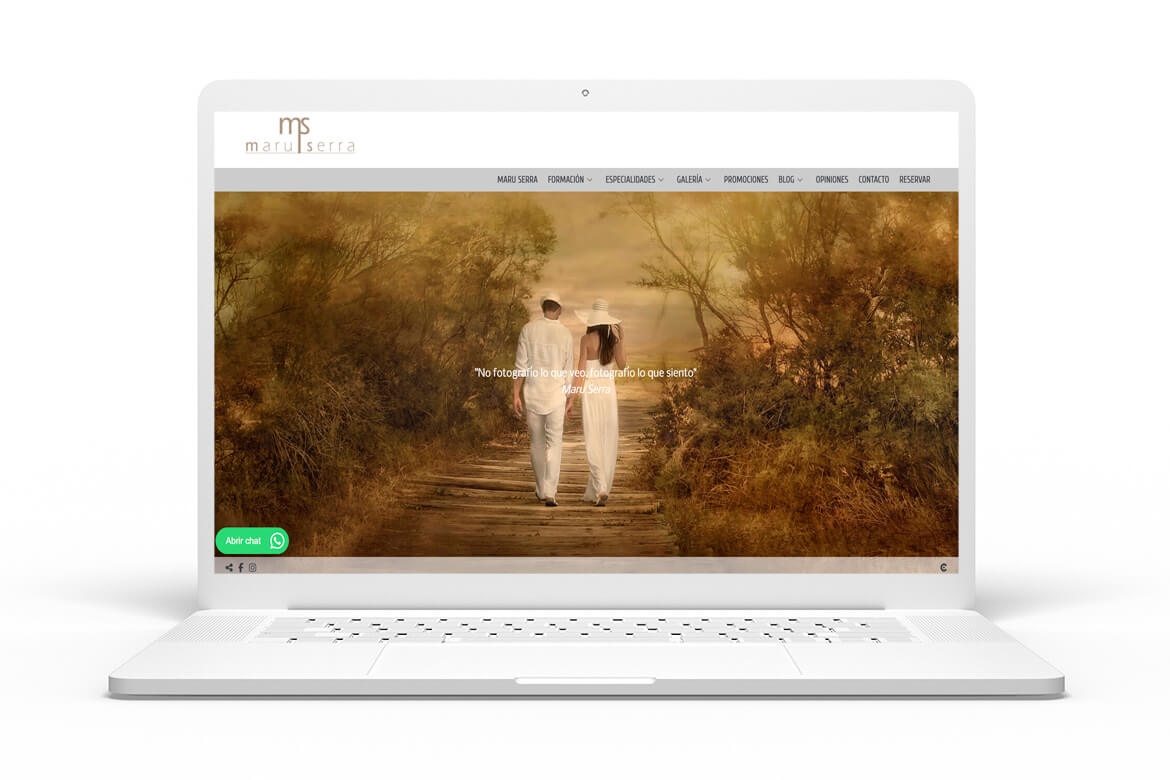
Maru Serra defines herself as a passionate photographer, and that passion is reflected in each of her works. Specialising in boudoir and children’s photography in Valencia, Maru has established herself as a leading professional in both fields. In addition, she has created her own line of training through an international online school where she gives courses, workshops and workshops aimed at photographers who wish to specialise or broaden their knowledge.
Among his most outstanding training courses are: “Boudoir photography course. A world of light” and the “Course on children’s photography and communions. A world of light“, where she shares her artistic and technical approach with those who wish to learn from her experience.
Maru is also part of our community of Arcadina ambassador photographers and she wanted to add her voice to this compilation of common mistakes that a beginner photographer can make. Instead of focusing only on the failures, Maru prefers to share her vision based on learning and constant growth.
She tells us that she was lucky enough to have, from the very beginning, the guidance of a great photographer whom she always admired and who knew how to guide her in her first steps. Even so, she remembers that the real driving force behind her evolution has always been the discipline with which she took on each project, each session and each stage of learning. An attitude that remains intact to this day and that she considers fundamental for anyone who wants to make their way in this profession.
Maru Serra’s recommendations
- “Look for a reference photographer to follow”. Especially at the beginning, it is very interesting to look for a photographer you admire and who has achieved his or her goals.
- “Without a good base and training, it is difficult for a professional career to take off successfully”. Training is fundamental for a photographer both in his or her beginnings and to update himself or herself after years in the profession.
- “Follow photographers who inspire you and learn from them. Even if you have a photographer you admire, it also helps to know and analyse the work of your peers.
- “Believe in yourself and in being able to do great projects. As well as thinking positive thoughts, be willing to face every project and every inconvenience that comes your way with energy. The only one who will stop you from achieving your goals is yourself.
- “Inspiration and self-improvement will always be outside your comfort zone. If you want to move forward you have to do different tasks and sometimes you will feel dizzy to carry them out. This is the only way. If you are brave and persistent, you will achieve great challenges.
- “Avoid comparing yourself with others, learn to value yourself, and be clear about what you want and what you are willing to sacrifice.
- “Let’s think about our positive aspects instead of looking for what we lack, and concentrate on our strengths, always surrounding ourselves with people who love us.”
- “We should be unique and think that no one is perfect, but that each person is unique in the world.”
- “To be generous with others, and to accept, in order to be authentic, that we all need each other and that prosperity does not consist in having achievements that others achieve, but in understanding that the important thing is to develop in ourselves the gift of transforming into valuable everything that we do with passion and love.”
Carlos Reina: sports sessions
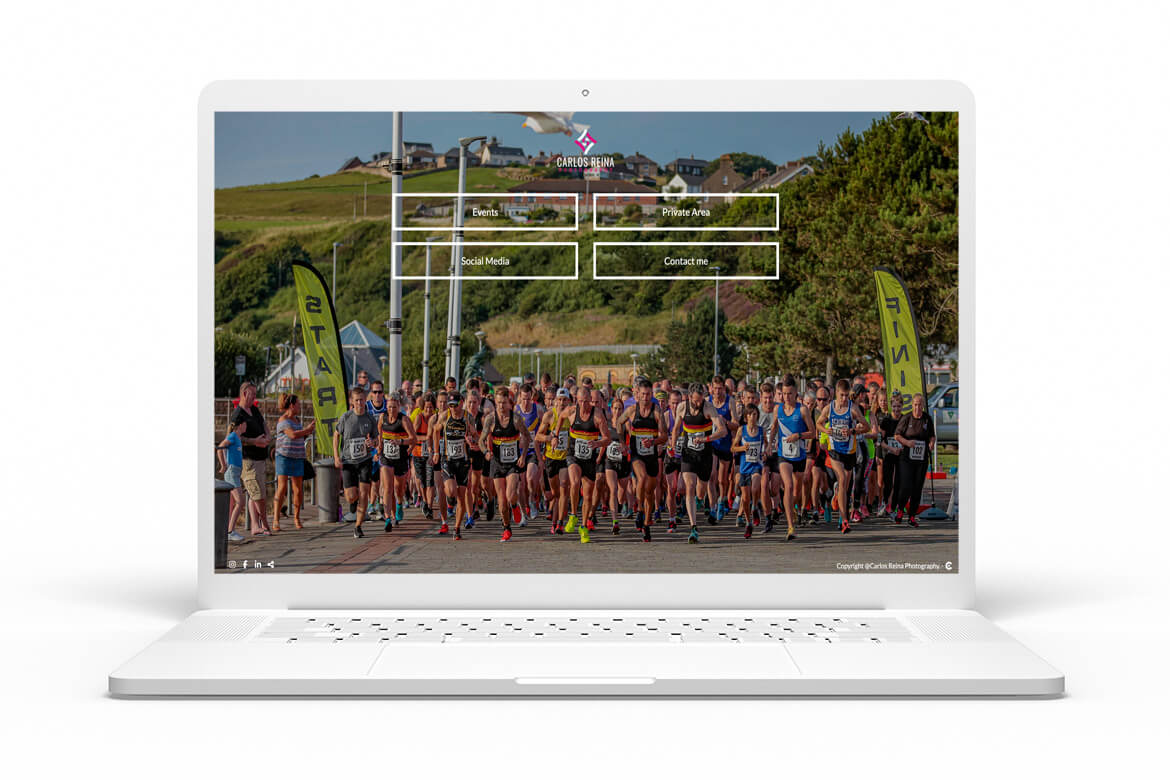
Carlos Reina is a talented photographer and videographer specialising in sports, commercial and event reportage. He currently resides in Cumbria, UK, where he continues to develop his professional career with a very versatile and dynamic approach.
We had the pleasure of interviewing him some time ago, and this time Carlos wanted to collaborate with us again by sharing his perspective on the most common mistakes of a beginner photographer. He told us that he finds it particularly useful to approach this subject from a double approach: on the one hand, to point out those generalised mistakes that many photographers tend to make when starting out; and on the other hand, to share his own personal stumbles, with the intention that they serve as a learning experience for those who are taking their first steps.
His close and honest vision adds a lot of value to this article, as it shows that even experienced professionals have had to overcome obstacles and learn from their own failures in order to grow in this profession.
Carlos Reina’s recommendations
- “Don’t think that by spending a fortune on great equipment you will be a better photographer.” Using quality equipment is important but it is not everything. Good photos don’t come from good cameras but from great photographers.
- “Never use the automatic mode of your camera”. Although this may seem obvious, it is less so for photographers who are just starting out . Research your camera, learn how to use all the features, and above all: practice, practice, practice.
- “Ask for criticism on your images. Whether they are constructive or somewhat destructive. You will always learn something from a colleague’s opinion. And above all, never think that your images are the best (they can always be improved, especially at the beginning).
- “Never work for free (unless you want to)”. Sometimes in this profession we are undervalued and many times you will meet people who want you to do a photo shoot for nothing. Value your time and only work “for free” if you see that it will bring you some kind of benefit (even if it’s not financial).
- “Look for inspiration everywhere. Whether it is by visiting photography websites, social networks or even classical painting. But always without copying.
Avoid the mistakes of a beginner photographer with these 10+1 key tips from Arcadina
When you are an experienced photographer, the mistakes of a beginner often seem obvious. However, when you are taking your first steps, many of these mistakes are not so obvious. That’s why it is essential that you learn about what you are passionate about, surround yourself with other colleagues who have already walked this path and, above all, that you never stop training.
As you will have seen throughout this article, many of today’s successful professional photographers started out facing the same doubts and mistakes that you may be experiencing now. The key is to always keep an open attitude to learning, trust in your own process, and never lose the enthusiasm with which you started.
Seek quality training, set realistic goals, surround yourself with people who inspire you and help you grow, and work every day to polish your style and improve your technique.
And if you are ready to take the next step and start building your digital photography business, at Arcadina we offer you a 14-day free trial to explore all our professional tools and start laying the foundations of your project with security, confidence and vision for the future.
Today we would like to share with you the testimony of Miguel Ángel Garrote from Focus Foto Estudio.
>> ‘Arcadina Labs is a good option and saves time’, Miguel Ángel Garrote
And finally, we would like to know what mistakes you remember making when you started out as a photographer. We would love to read your answers in the comments.
Arcadina goes with you
Fulfil your dreams and develop your career with us. We offer you to try our web service free for 14 days. And with no commitment of permanence.
Arcadina is much more than a website, it is business solutions for photographers.
If you have any queries, our Customer Service Team is always ready to help you 24 hours a day, 7 days a week. We listen to you.





